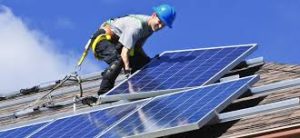Photovoltaic (PV) systems have become an increasingly vital component of sustainable urban development, particularly in cities like Pittsburgh that are actively pursuing greener energy strategies. Although Pittsburgh experiences a temperate climate with varying levels of sunlight throughout the year, advancements in solar technology have made PV systems highly adaptable and effective, even in locations that are not traditionally associated with high solar irradiance. Understanding how a PV system functions within the specific environmental and infrastructural context of Pittsburgh is essential for assessing its practicality, efficiency, and contribution to the city’s clean energy transition.

At the core of a PV system are solar panels composed of multiple photovoltaic cells, typically made from silicon semiconductors. These cells generate direct current (DC) electricity when exposed to sunlight through a process known as the photovoltaic effect. The amount of electricity produced depends on the intensity and angle of the sunlight, which in Pittsburgh fluctuates seasonally. Despite the city’s average of 160 sunny days per year, modern PV panels are capable of capturing diffuse sunlight and converting it into usable energy, making them suitable even under cloudy or overcast conditions common in the region.
Once DC electricity is generated by the solar panels, it must be converted into alternating current (AC) electricity to be compatible with standard household appliances and the public utility grid. This is achieved through an inverter, a critical component of the PV system that ensures the electrical output meets the required voltage and frequency standards. In Pittsburgh, inverters also support grid integration by enabling net metering, a policy that allows surplus electricity generated during the day to be sent back to the grid in exchange for credits. These credits can then offset electricity consumption during nighttime or periods of low solar production, thereby enhancing the financial efficiency of the system.
PV systems in Pittsburgh can be designed as grid-tied, off-grid, or hybrid configurations. Most residential and commercial systems in the city are grid-tied, meaning they remain connected to the utility grid for backup power while benefiting from net metering. Off-grid systems, although less common in urban environments, are used in remote or self-sufficient applications and typically include battery storage to provide electricity when solar generation is unavailable. Hybrid systems combine the benefits of both, incorporating battery storage while maintaining grid connectivity, offering greater energy independence and resilience during power outages.
Installation practices in Pittsburgh often take into account the city’s architecture, roof angles, and orientation to maximize solar exposure. South-facing rooftops with minimal shading are ideal for capturing the highest amount of solar energy throughout the day. Installers also consider the local climate, using weather-resistant mounting systems and technologies designed to perform well in colder temperatures, snow accumulation, and variable weather patterns typical of western Pennsylvania.
Another important component of PV systems in Pittsburgh is the monitoring system, which tracks energy production, system performance, and potential issues. Digital platforms allow users to observe real-time data on energy generation and consumption, offering insights into system efficiency and enabling timely maintenance. Regular monitoring ensures that the PV system continues to perform optimally across changing weather conditions and seasonal variations.
In conclusion, a PV system in Pittsburgh functions through a coordinated integration of solar panels, inverters, grid connections, and monitoring technologies, all of which are adapted to the city’s unique environmental and infrastructural conditions. Despite the region’s moderate sunlight, the efficiency of modern photovoltaic technology enables reliable and cost-effective solar energy generation. As Pittsburgh advances its climate goals and increases support for renewable energy infrastructure, PV systems will play an essential role in transforming the city’s energy landscape and promoting long-term sustainability.
